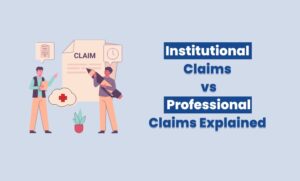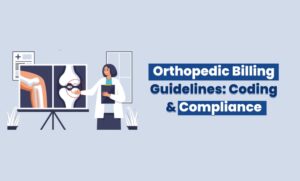Are you using the right ICD 10 code for cholelithiasis in your practice? Accurate coding is critical, not just for diagnosing gallstones but for ensuring proper billing and maximizing reimbursement. Cholelithiasis, or gallstones, is a common condition that can have a significant impact on treatment plans and financial outcomes.
As a healthcare provider, medical coder, or administrator, it’s essential to fully understand the various ICD 10 Cholelithiasis codes to ensure precise documentation and smooth claim processing.
In this article, we’ll cover the different codes for cholelithiasis, explain how to apply them correctly, and offer valuable billing and coding tips that can improve your practice’s efficiency and reimbursement success.
What is Cholelithiasis?
Cholelithiasis, commonly known as gallstones, refers to the formation of stones within the gallbladder or bile ducts. These stones can range in size and may cause various symptoms, including severe abdominal pain, nausea, vomiting, or jaundice. In some cases, gallstones can lead to complications such as acute cholecystitis (inflammation of the gallbladder), cholangitis (infection of the bile ducts), or pancreatitis.
Accurate and timely diagnosis is essential to prevent these complications, and proper documentation of the condition using the ICD 10 code for cholelithiasis is vital for medical billing and reimbursement.
ICD 10 Code for Cholelithiasis
The ICD-10 code for cholelithiasis is part of the K80 category in the ICD-10-CM classification system, which falls under Diseases of the Digestive System. This classification includes a range of codes that specify the presence of gallstones and any associated complications.
ICD-10 Code for Cholelithiasis: K80 Cholelithiasis (Gallstones)

- K80.0: Calculus of gallbladder with acute cholecystitis
- K80.1: Calculus of gallbladder with other cholecystitis
- K80.2: Calculus of gallbladder without cholecystitis
- K80.3: Calculus of bile duct with cholangitis
- K80.4: Calculus of bile duct with cholecystitis
- K80.5: Calculus of bile duct without cholangitis or cholecystitis
- K80.6: Calculus of gallbladder and bile duct with cholecystitis
- K80.7: Calculus of gallbladder and bile duct without cholecystitis
- K80.8: Other cholelithiasis (this code is used for less common cases or those not fitting the above categories)
Each code in the K80 category corresponds to a specific type of gallstone and the complications that may or may not accompany it. It’s crucial to use the most specific code to match the patient’s condition accurately.
How to Use ICD-10 Code for Cholelithiasis
Correct usage of the ICD-10 code for Cholelithiasis ensures clear communication between healthcare providers and insurers. The process begins with accurate documentation of the patient’s condition and symptoms. Here are some guidelines on how to effectively use these codes:
1. Accurate Documentation
Ensure all symptoms and diagnostic findings are documented clearly. If the gallstones are causing significant symptoms such as pain or infection, this must be reflected in the patient’s medical records. For example, if the gallstones are causing inflammation of the gallbladder, you would use K80.0 (Calculus of the gallbladder with acute cholecystitis).
2. Select the Most Specific Code
Always choose the most detailed code available. For instance, if gallstones are present in both the gallbladder and bile ducts with cholecystitis, the appropriate code would be K80.6 (Calculus of the gallbladder and bile duct with cholecystitis).
3. Modifiers for Multiple Conditions
When a patient has multiple diagnoses or conditions, use modifiers to provide additional detail. For example, if a patient has both cholelithiasis and pancreatitis, include codes for both conditions and apply the necessary modifiers for accurate billing.
Common Variants of Cholelithiasis ICD 10 Codes
There are different variations of Cholelithiasis ICD 10 codes, depending on the location of the gallstones and whether there are complications. Here are some key variants:
- K80.0: Calculus of gallbladder with acute cholecystitis
This code is used when gallstones are present in the gallbladder and have led to inflammation or infection (acute cholecystitis).
- K80.2: Calculus of gallbladder without cholecystitis
Use this code when a patient has gallstones in the gallbladder without any signs of inflammation or infection.
- K80.3: Calculus of bile duct with cholangitis
This code is used when gallstones are present in the bile duct and have caused an infection (cholangitis).
- K80.8: Other cholelithiasis
Doctors use this category for rare or atypical gallstone cases that don’t fit into the more common types listed above.
Each of these codes helps healthcare providers and coders to better communicate the exact nature of the patient’s condition, ensuring appropriate treatment and accurate billing.
Billing and Coding Guidelines for Cholelithiasis ICD 10
Accurate billing and coding for ICD 10 Cholelithiasis are essential for proper reimbursement and avoiding claim denials. Here are some important guidelines to follow:
Correct Coding Sequence: The primary diagnosis should be the most serious or the one requiring the most intervention. For instance, if the patient has both gallstones and acute cholecystitis, the primary diagnosis should be K80.0, as it reflects the severity of the condition.
Use CPT Codes for Procedures: Along with the ICD-10 diagnosis code, you will also need to apply the correct Current Procedural Terminology (CPT) codes for any procedures performed. This might include a cholecystectomy (removal of the gallbladder) or other surgical interventions.
Modifiers for Additional Information: When multiple diagnoses are present or if the procedure is complicated, modifiers may be necessary. For example, if a patient is undergoing surgery for both gallstones and bile duct issues, modifiers can help indicate the complexity of the procedure for reimbursement.
Ensure Documentation Matches Coding: Proper documentation is crucial. Ensure that all clinical notes, test results (such as ultrasound reports), and physician notes align with the ICD 10 code for Cholelithiasis you’re using. This can prevent claims from being rejected or delayed.
Conclusion
Correctly coding Cholelithiasis ICD 10 is essential for accurate diagnosis, effective treatment, and proper reimbursement. By using the most specific codes and adhering to coding and billing guidelines, healthcare providers can ensure their practices are compliant and financially efficient.
Whether you’re coding for routine gallstones or complex cases involving complications, understanding the various ICD 10 codes for Cholelithiasis ensures a smoother billing process and maximizes reimbursement opportunities.





